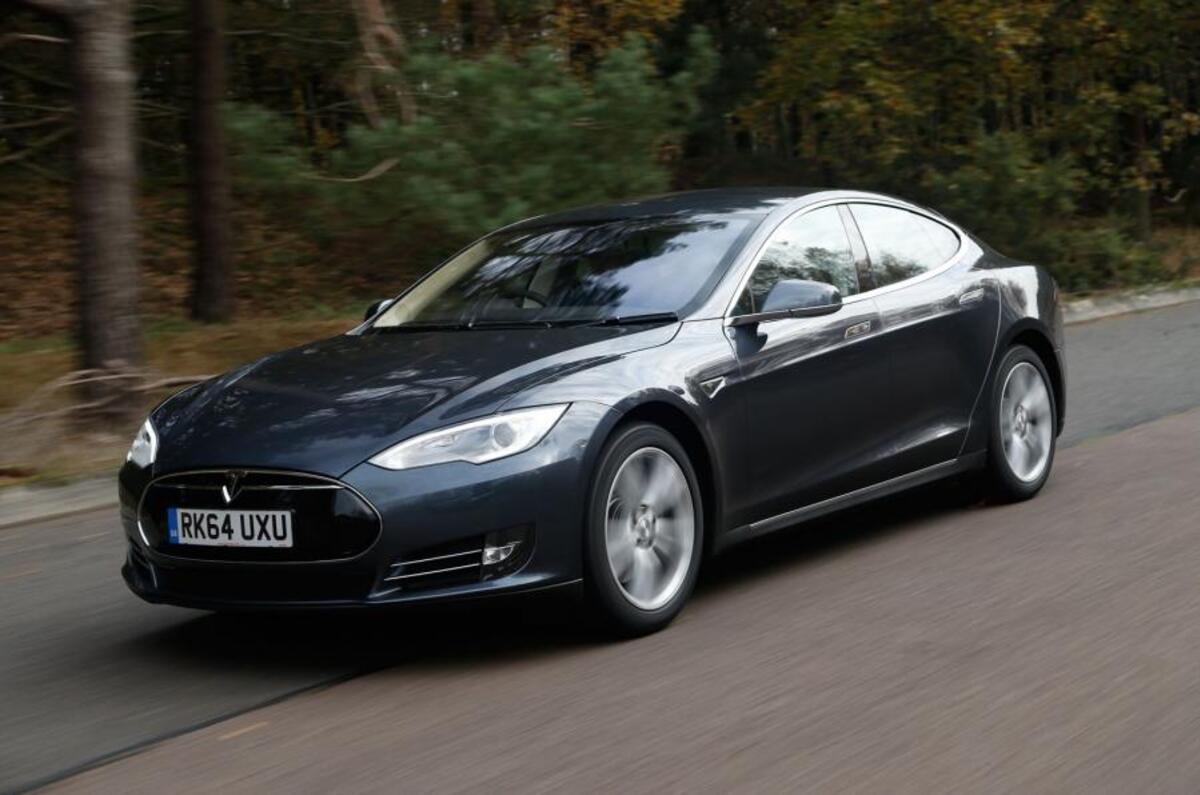Tesla is rolling out a new level of autonomous driving on many of its Model S vehicles, as part of the latest update to version 7.0 of the car’s software.
The technology, which has been in testing for over a year in most markets where the Model S is sold, will be made available overnight to around 60,000 Model S cars built since last September and fitted with the ultrasonic sensors and forward-facing camera required for the system to work. Called Autopilot, it is designed primarily for motorway use, where it can switch between lanes without any direct steering input from the driver and react to traffic flow.
Tesla describes this generation of the software as “a public beta” and says that recognition of traffic lights and Stop signs will only come with the next update of the software. It is also recommending that customers keep their hands on the wheel.
The system uses four data sources - ultrasonic sensors right around the vehicle, a forward-facing camera that can read most road signs, forward radar that can see through fog, rain and snow, and what Tesla describes as “high-precision digital maps” that include pooled data on the number of lanes, curvature of the roads and even parking lots, all supplied by existing Model S usage.
The move was announced by Tesla boss Elon Musk at a press conference in the United States. He admitted that it was an early version of the technology, but said that Tesla’s connected network of vehicles would allow it to make rapid progress.
“We still think of this as a public beta,” he said, “so we want people to be quite careful with it at first. But it learns over time. The network of vehicles is constantly learning and as we release the software and more people enable Autopilot, the information about how to drive is uploaded to the network. Each driver is, in effect, an expert trainer in how the Autopilot should work. It’s a combination of a variety of systems and this can only really be done as a connected vehicle.”
Musk said that with its current levels of capability, the system would be best suited to well-marked roads and dense-traffic situations - but suggested that it could eventually gain enough autonomy to do away with conventional driving controls altogether. “It tends to work better in places where there are clear markings; it works best where the infrastructure is good,” he said.
“It’s a real boon in high-traffic situations. If you’re in slow-moving gridlock traffic, turn on Autopilot and it works really well - almost to the point where you can take your hands off the wheel. I won’t say to do that, but some people may.”
He stressed that owners will still be liable for any accidents that are caused by a Model S travelling with Autopilot, and added that users should “exercise caution at this early stage”. “It should not hit pedestrians, hopefully,” he said. “It does sense pedestrians; it can see them. It can also see cyclists, so it should brake before hitting them. It should handle them well. But the instructions say to pay attention to the surroundings and be ready to take the wheel at any time.”
Version 7.0 of the software will also add side collision avoidance to the Model S; the steering wheel will have extra resistance if the driver is trying to move across into another vehicle. Musk also confirmed that version 7.1 will enable the Model S to drive along private driveways, park itself and close the garage door.
Watch the Tesla Model S P85D in the ultimate drag race video
Cars built without the required sensors will not be able to have the system retrofitted, due to cost. “If we thought there was a reasonable way to do it, we would,” said Musk, “but it involves a new front bumper, a new windscreen and taking the entire car apart to change the wiring harness. It is technically possible but there’s no way it would make any financial sense.”
The over-the-air update will start in North America this evening and take a few days to complete across the fleet of vehicles. Tesla says it is waiting on regulatory approval to install the patch to cars in Europe and Asia, but it expects to secure this within the next week. The Autopilot feature will be a cost upgrade (a $2500 one-time charge in the US), and it will also be available on the forthcoming Model X.
Musk also said that he believes Tesla will be ready to have a fully autonomous vehicle by 2018. “I’m quite confident that within three years the car will be able to take you from point to point - like from home to work - without you doing anything,” he said. “You could be asleep. But by that time, the regulatory approval for that will vary from jurisdiction to jurisdiction. In some areas it could be a year away; in some it could be several years off. But where data says that statistically it’s safer to have autonomous cars, that’s the point where regulators will be happy to have them.”
The Autopilot technology has already been demonstrated by some of the early adopters who are fed beta versions of the Tesla software. YouTube footage posted by owners shows a Model S moving between lanes on a motorway with no inputs beyond a flick of the indicator stalk.
Get the latest car news, reviews and galleries from Autocar direct to your inbox every week. Enter your email address below:




Join the debate
Add your comment
Don't understand why people
Mentally Impaired !
Boris Johnston
Will drivers be up to the job?